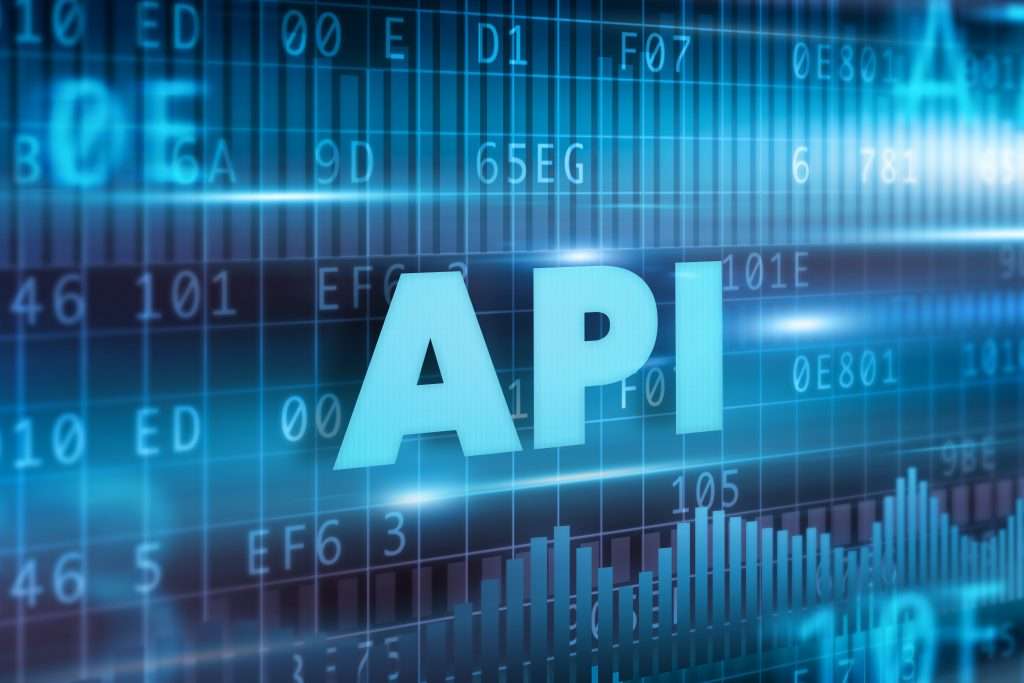My last article had focused on Big Data in order you to better understand how this term relates to digitalization and what you need to know to transfer relevant aspects onto your business. Now it’s time to talk about Application Programming Interface (API) to understand and transfer relevant aspects onto your business.
With this article you will get answers to the following questions:
- Application Programming Interface (API) – What is it and how does it work?
- Application Programming Interface (API) – What does it mean? (Consequences)
- Application Programming Interface (API) – Relevance to the question of “How to Dominate your Market”
- Application Programming Interface (API) – What is it and how does it work?
In the interest of a better understanding, I don’t want to use any textbook definitions of the term Application Programming Interface, abbreviated API. And even if there are different kind of APIs, they all have one thing in common: An API is an interface that enables the interaction between applications, data and devices to create connectivity. In this sense an API is a messenger that takes a request and tells a system what you want to do and then returns the response back to you. Let’s use an example to illustrate what is meant and how it works:
If you want to book a flight you can visit an airline website, where you have a menu of options to choose from. You choose a departure and return city and the dates to check the flight’s availability and price. You interact with the airline’s website to get access to the airline’s database.
But if you are not using the airline’s website which has direct access to the database, you need an interface to be still able to get all this information. This is possible by using APIs, that allow third parties access to previously closed data pools. For example, if you use an online travel service, it interacts with different airlines API to get information from the airline system. On top, data from all existing interfaces are used to compare prices, data, booking classes, etc. and then to show you the response. Within seconds, the existing data is prepared and made available to us, so that a decision is easy and the flight booking is possible within a few minutes.
Booking airline tickets through online services or comparison portals is just one example of many. In the meantime, APIs are used in a variety of ways and used by us every day. Since the system works automatically in the background, it is usually not noticed by us.
At the same time APIs, enables cross-firm cooperation. It is what we call a modular system. But that was not always the case. Now remember – When iPhone 1 came out, it just had the Apple apps. But then they realized, “If we open it up and allow you to add third-party apps, then we can increase choice set exponentially.” This is the background why innovative companies are increasingly working with modular systems.
Another good example is Tesla – Many would say that Tesla is a car company, but in reality, it is a software company: If I wanted to have a new feature for my car earlier, like anti-lock brakes, I had to buy a new car. Now, if I want a new feature on my car, I download it. Tesla just introduced the automatic parallel parking feature to your car. Push a button, car parks itself. Means you just need to download it. That simple.
So, these are just a few examples to give you an idea of what is possible with modular systems and using APIs for interaction and connectivity.
- Application Programming Interface (API) – What does it mean? (Consequences)
By using modular systems and APIs, new business models have evolved that overtake traditional companies in a very short space of time. In addition to using new technologies, it is important not to have inventory. Traditional companies have massive costs, caused by long planning and production times and by inventory. Take the clothing industry as an example: How long do you think it takes to produce an item from the moment that they start providing it to the moment that’s on the shelf? 7 months.
What this means is that a designer has to know what people are going to want to buy in seven months. People don’t even know what they’re having for dinner tonight. A designer is supposed to know what these people are going to want to buy in seven months? There’s no way.
So you have to find another way. How does Zarah do it? They design a product, prototype it, check it out, make sure all works. If they like it – and only then – they put it in the software and start doing all the necessary steps. Benefit? 25 days versus seven months – only by this difference in the procedure.
Much better, however, is not to have any inventory at all. The way to do that is to sell it before you make it, sell it before you buy it: What Tesla does is they’re made to order, just like Dell. You place an order with Dell, 48 hours later, you get the computer. They make it to order, same with Tesla.
Let’s take some other examples: Flexport. Biggest logistics company in the world, no own ships. Airbnb. No own beds. Uber. No own cars. And the capacity utilization of Uber cars far exceeds the capacity utilization of taxicabs.
- Application Programming Interface (API) – Relevance to the question of “How to Dominate your Market”
So the main message is that we need to be a data company. We can’t do everything ourselves. We need to be a platform company using innovative technologies to change traditional procedures and minimize costs like inventory.
Understanding ourselves as a software company, collecting, structuring and evaluating data, then using technologies like APIs, without having an own inventory which is unnecessarily expensive, will help you finding new ways and ideas to conquer the market of the future.
Unlike traditional companies, innovative companies have understood the main aspects for the key to success and consciously and purposefully use it for themselves.
And that is the difference between digitalization and digital transformation: while some are still busy digitizing their processes, the others are in the fast lane by living digital transformation. The latter have understood what is important and use this understanding as a foundation for true pioneering spirit and success.
Conclusion
This article on APIs was the last of its kind to understand the hard facts surrounding digitalization and its relationships. But digital transformation also needs knowledge of soft factors in order to be really successful. So stay tuned if you want to know more. It is worth it!
In the meantime, if you haven’t done it yet, take your chance and check your knowledge about digitization, digitalization and digital transformation, to find out what you already know and where you still have a lack of information.
Do the test now: Click here for the Digi-Check!
Note: If you belong to the first ones you’ll also get the opportunity for a free 30 minutes online coaching session with me on top to talk about your results and your next steps.
© Image: Tuomas Kujansuu – stock.adobe.com

